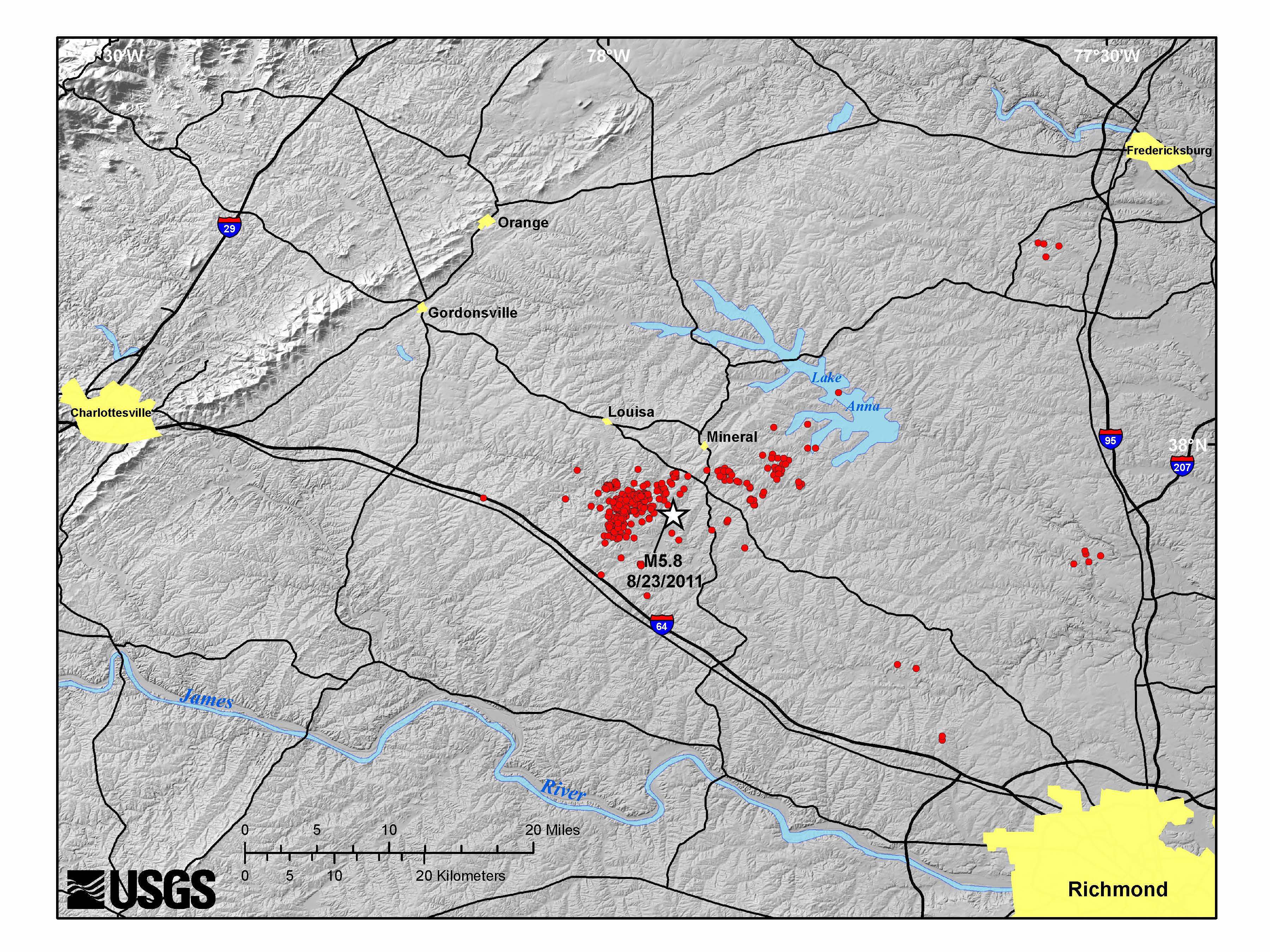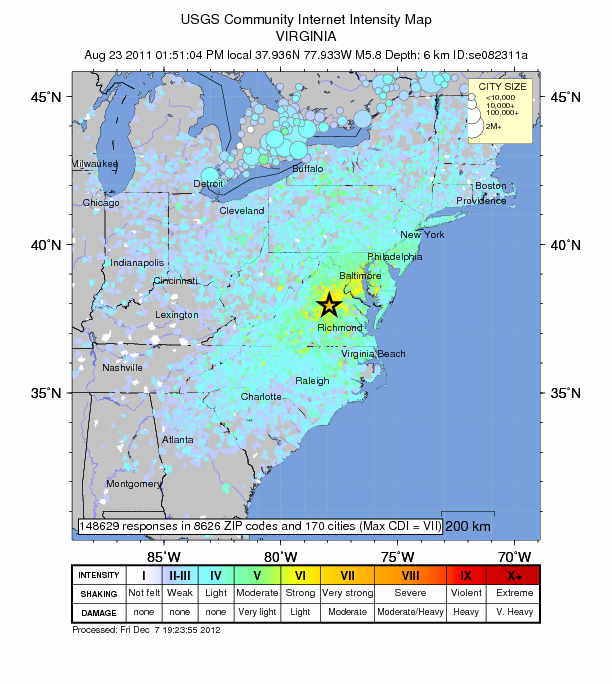2011 Virginia Earthquake Traced From Sky


SAN FRANCISCO — Blobs of solidified magma may have helped control the direction of energy from the 2011 Virginia earthquake, according to early results from an airborne geologic survey conducted in July 2012.
"If you look to the northeast [from the epicenter], you see that the structures are rather continuous," said Anji Shah, a U.S. Geological Survey research geophysicist and lead scientist for the study. "Whereas if you look to the southwest, you quickly run into a pluton (the solidified magma), so you have an interface of different rock types, which might make the energy a lot less efficient in that direction," she told OurAmazingPlanet.
The strongest energy from the Virginia earthquake appeared channeled toward the northeast, in the direction of Washington, D.C., and dissipated to the south, according to the USGS's shake maps. A chunky pluton also sits to the west of the epicenter. A pluton is an underground mass of cooled magma, or igneous rock, that can range in size from a few miles to tens of miles (a couple kilometers to tens of kilometers) in diameter.
A chunky pluton also sits to the west of the epicenter. A pluton is an underground mass of cooled magma, or igneous rock, that can range in size from a few miles to tens of miles (a couple kilometers to tens of kilometers) in diameter.
The survey also revealed that pre-existing weaknesses in the Earth's crust made certain areas more susceptible to aftershocks, helping explain the patterns of small earthquakes recorded after the original 5.8-magnitude shaker. Many aftershocks hit along Jurassic-age dikes, or linear intrusions of magma, Shah said. Other small quakes seem to follow an ear-shaped bend revealed by magnetic survey data. "If there's a bend, there might be an offset or a zone of weakness in the area where the earthquake was," Shah said.
The instruments, carried on a customized airplane, peered up to 9 miles (14.5 kilometers) underground. The survey measured Earth's gravitational and magnetic fields throughout the region and collected high-resolution topographic data. Subtle changes in the data can indicate where underground faults are located, because different rock types generate slightly different magnetic and gravity fields. The contrast in rock types can indicate a fault or a contact between two rock formations.
The Aug. 23 earthquake occurred along a buried and previously unknown fault — now called the Quail Fault — in the Virginia Piedmont. The epicenter was 38 miles (61 km) northwest of Richmond, and the fault ruptured 3 miles (about 5 km) below the surface. The survey also tracked faults responsible for aftershocks.
Get the world’s most fascinating discoveries delivered straight to your inbox.
"We are trying to understand the geologic structures that led to a large earthquake happening where it did," Shah said. "The data are telling us to some degree how far from the epicenter these faults extend and how long they are."
"One of the questions we're still working on," she added, "is whether we see a contact between different types of rocks for this fault, which might make slip more likely to happen on such a fault. It might."
Reach Becky Oskin at boskin@techmedianetwork.com. Follow her on Twitter @beckyoskin. Follow OurAmazingPlanet on Twitter @OAPlanet. We're also on Facebook and Google+.




